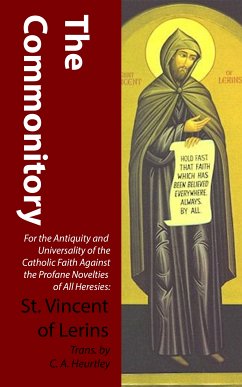Vincentius was of Gallic nationality. In earlier life he had been engaged in secular pursuits, whether civil or military is not clear, though the term he uses, "secularis militia," might possibly imply the latter. He refers to the Council of Ephesus, held in the summer and early autumn of 431, as having been held some three years previously to the time at which he was writing "ante triennium ferme." This gives the date of the Commonitory 434. Cyril, bishop of Alexandria, was still living. Sixtus the Third had succeeded to the See of Rome; his predecessor, Celestine, having died in 432. Gennadius says that Vincentius died, "Theodosio et Valentiniano regnantibus." Theodosius died, leaving Valentinian still reigning, in July, 450. Vincentius' death, therefore, must have occurred in or before that year.
Baronius places his name in the Roman Martyrology, Tillemont doubts whether with sufficient reason.7 He is commemorated on the 24th of May.
Dieser Download kann aus rechtlichen Gründen nur mit Rechnungsadresse in A, B, BG, CY, CZ, D, DK, EW, E, FIN, F, GR, H, IRL, I, LT, L, LR, M, NL, PL, P, R, S, SLO, SK ausgeliefert werden.









